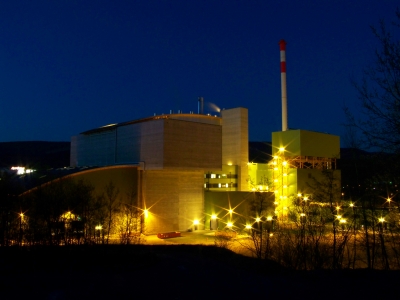If this is denied, a massive potential for WtE to recover heat and to substitute the combustion of fossil fuels (gas, coal, or peat) for efficient district heating will be lost. Waste not suitable for recycling is thermally treated to reduce volume, destroy pollutants and avoid landfilling. Excess heat created in this process is used to produce electricity and supply heat to district heating.
The current regulatory framework, particularly the Renewable Energy Directive (RED II and III) and the Energy Efficiency Directive (EED), acknowledges the importance of waste heat and sets ambitious targets. However, it is essential to ensure that heat recovered from WtE processes is fully recognised within these directives, in particular in the Guidance Documents for RED and EED that are currently under preparation.
The rationale for this recognition is twofold. Firstly, unlike conventional power plants, WtE facilities have the hygienic task of treating the waste. This exothermal process unavoidably generates excess heat (waste heat). If this is not used, the waste still needs to be thermally treated for sanitary
reasons. Hence, waste is not a conventional fuel! Waste is not produced on purpose. It is the leftover of our society that must be reliably treated in an environmentally sound manner, with complex flue gas cleaning. To do so, WtE plant operators must comply with the strict rules set in the Industrial Emissions Directive, under the waste incineration chapter.
Secondly, the heat generated from the treatment of non-recyclable waste, which would otherwise be lost, can significantly contribute to our heating needs and facilitate the MS to reach the targets. In some regions, the heat supply from WtE covers more than 50% of the local heat demand.
WtE offers a strategic advantage by transforming non-recyclable waste into valuable energy for district heating systems, enhancing our energy security and supporting the transition to a circular economy. This process aligns with our waste management principles and provides a competitive and secure energy alternative.
Excluding the full heat production from WtE plants from the waste heat definition could lead to the underutilization or even elimination of an important energy resource. If these plants are not integrated into efficient district heating and cooling systems, the energy they recover would be wasted, despite its availability.
Acknowledging the heat generated by WtE plants as waste heat under RED and EED is vital for maximising the use of local, sustainable excess energy sources. This approach is not just about energy efficiency; it is about recognising the valuable role WtE plays in managing waste and recovering energy. Such recognition aligns with the goals of environmental sustainability and efficient resource use.
In conclusion, recognising waste heat from WtE under relevant EU directives is imperative for enhancing our energy efficiency and sustainability efforts. It supports broader environmental objectives and contributes to a more resilient and self-sufficient Europe.







The classification of waste incineration’s heat output as ‘waste heat’ under the Renewable Energy Directive is misleading and detrimental to sustainability goals. This categorization conflicts with existing laws requiring the recovery of heat and risks undermining decarbonization efforts by offering false incentives. The European Commission must revise this misclassification to prevent counterproductive outcomes and support the transition to genuinely low-carbon energy solutions.
We published a joint letter last week with 30+ organisations. https://zerowasteeurope.eu/library/open-letter-on-the-implementation-of-the-red-in-the-european-union-excluding-waste-incineration-from-the-waste-heat-targets/